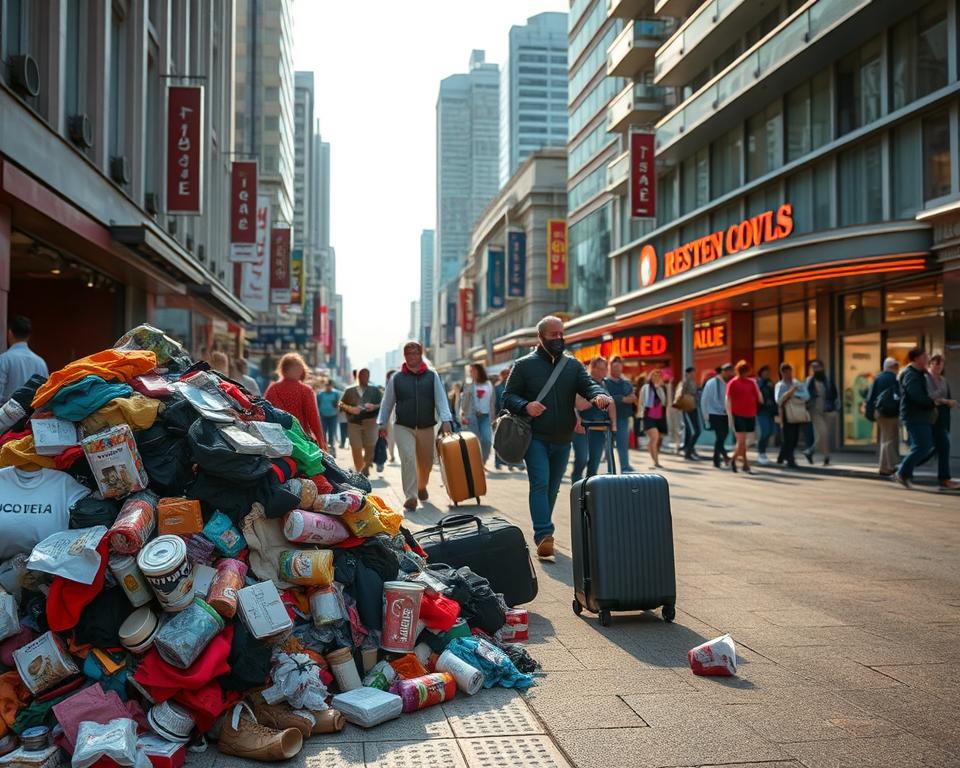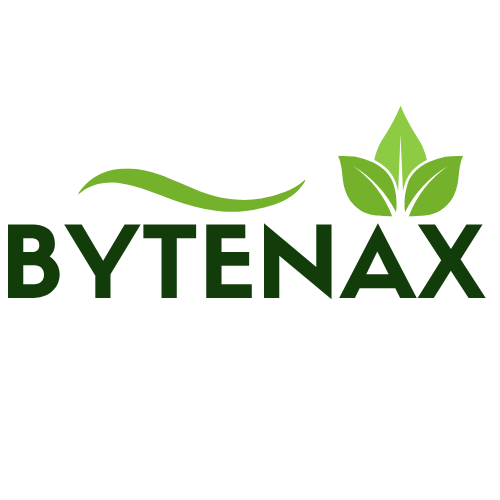Anzeigen
Nachhaltigkeit can feel big and costly — but what if small, clear steps made a real difference?
The classic definition says meeting present needs without harming future needs. Companies often split this into three pillars: environment, social, and economic. You will see trusted frameworks like LEED, TRUE, and ISO 14001/50001 that offer roadmaps for action.
Across energy, waste, water, food culture, and travel, this guide gives practical, low-cost ways to reduce your impact and adapt to climate goals. We focus on clear practices you can use at home, in business, and in local areas. For health or technical questions, consult qualified professionals before changing routines.
Why Sustainability examples matter now
When weather, markets, and water supplies shift, setting measurable goals helps you stay resilient and cut costs.
Acting now lowers your day-to-day risk from heat waves, stronger storms, and supply chain disruption. That means safer workplaces and steadier operations for you and your team.
Anzeigen
Companies and cities use science-aligned targets to reduce greenhouse gas emissions and track energy, water, and waste through KPIs. Following verified frameworks like LEED, TRUE, and ISO 14001/50001 gives you clear steps and credible reporting.
- Cutting greenhouse gas and emissions saves utility bills and trims your carbon footprint.
- Clear goals stop greenwashing and make progress easy to share with customers and partners.
- Efficiency and circular practices free up resources for future improvements.
At the community level, measured reductions improve air and local water quality and strengthen food and cultural systems. Start with simple targets, track change, and build momentum—your actions add up to real impact.
Sustainability examples: quick wins you can start today
Quick wins are practical steps you can try this week. They cut waste and save time or money.
Anzeigen
“Prioritize source reduction and reuse before recycling and disposal.”
Reduce, reuse, recycle with intent
Fangen Sie klein an: refuse excess packaging and bring reusable bags and containers.
- Set clear bins for recycling and compost at home or work.
- Pick products with simple labels and sortable materials.
- Audit bins monthly to cut contamination and improve recycling rates.
Choose clean energy options at home and work
Switch to a green tariff or join community solar to shrink your carbon footprint.
- Replace bulbs with LEDs and use smart power strips.
- Buy green power where available to lower grid emissions.
- Track simple energy use changes and celebrate wins.
Cut transport emissions with smarter trips
Combine errands, carpool, or try a transit pass one day a week.
- Bike or walk short trips to reduce your footprint.
- Work remotely a day per week to save fuel and time.
- Share initiatives with coworkers to spread what works locally.
Clean energy and lower carbon: practical paths to reduce your footprint
Start by buying cleaner power before you buy equipment. That lets you cut greenhouse gas quickly while you plan longer upgrades.
Switch to renewable plans and on‑site generation
Enroll in a green tariff or join a community renewable energy program to source renewable energy without new panels. If you own your site, assess rooftop solar or a power purchase agreement to lock predictable costs and reduce your carbon.
Electrify transport and tighten logistics
Phase fleet upgrades to EVs or hybrids, focusing on high‑mileage routes first. Combine route planning, telematics, and idle reduction to cut gas emissions and empty miles.
Measure carbon and use offsets carefully
Use a carbon accounting platform to track scopes, set goals, and show trends. Pair measurable cuts with third‑party verified offsets for hard‑to‑abate sources.
- Adopt building automation and high‑efficiency HVAC to lower energy during peak hours.
- Consider battery storage or demand response to shift load and support the grid.
- Use EPA’s WARM model when choices affect waste and lifecycle emissions.
“GM’s all‑electric vision and Apple’s supplier clean energy investments show how companies can extend impact.”
Publish annual updates so stakeholders see clear progress on emissions, energy, and your carbon footprint.
Waste reduction and circular economy: from disposal to resource
Turn everyday trash into useful resources by rethinking packaging, bins, and take-back plans. Small design choices and clear handling methods make it easier for your team and customers to sort and recover materials.
Design out waste with minimal, recyclable, or reusable materials
Start simple. Choose minimal packaging and favor one or two recyclable materials. Avoid mixed layers that complicate sorting and disposal.
- Pick materials that local recyclers accept to boost capture rates.
- Ask suppliers to increase recycled content to grow markets for recovered resources.
Implement responsible recycling, composting, and take-back
Label bins with visuals for paper, metals, plastics, glass, organics, and specialty items. Place them where waste is generated to improve capture and cut contamination.
- Launch product or packaging take-back programs and partner with reputable recyclers.
- Add composting for food scraps and yard trimmings to divert heavy organic waste and reduce methane.
Aim for zero waste to landfill with transparent methods
Set measurable goals and track diversion monthly. TRUE certification recognizes 90%+ diversion over 12 months and can validate your progress.
“If you pursue zero waste to landfill, disclose your approach and avoid relying on incineration, since ash often requires landfilling.”
Study the Amcor target to make packaging recyclable or reusable and use that as a practical example when talking with suppliers. Share diversion progress with your team to celebrate wins and reduce contamination where loss is highest.
Learn more about circular choices on the circular economy overview to guide your programs and goals.
Water conservation and stewardship you can measure
Practical steps make it easy to cut water use and protect local streams. You can track savings and spot leaks before they waste money.
Start with fixtures and landscaping. Install WaterSense-labeled faucets and low-flow toilets, and fix leaks promptly. Those moves lower bills with little behavior change.
Use efficient fixtures and smart landscape practices
Choose climate-appropriate plants, drip irrigation, and smart controllers. They keep landscapes healthy while cutting outdoor demand.
Support reuse, rain capture, and responsible discharge
Capture rain where local codes allow and reuse greywater responsibly to reduce potable demand. In kitchens, run full loads and fit efficient spray valves paired with staff training.
- Monitor monthly: benchmark gallons per square foot or per unit of production to see trends.
- Treat and test discharge to prevent pollution and consult utilities on pre-treatment.
- Explore reuse in operations—the Levi Strauss example shows how process water recycling preserves freshwater.
“Incorporate water goals alongside energy and waste so projects reinforce each other.”
Green building and credible certifications to guide progress
Certifications turn good intentions into verifiable, site-level action that improves performance and trust. Use programs that match your scale—single building, campus, or power system—to set clear goals and show progress.
What the main programs cover
LEED focuses on building and neighborhood performance: energy, water, materials, waste, and indoor health. GBCI provides third‑party certification you can trust.
TRUE verifies zero‑waste programs that achieve 90%+ diversion over 12 months, standardizing how you measure progress.
PEER assesses power systems for reliability, efficiency, safety, and grid services—useful if you manage a campus or microgrid.
Management standards and design practices
ISO 14001 builds an environmental management system for continuous improvement and compliance.
ISO 50001 structures energy planning, metering, and reviews to cut energy and carbon systematically.
- Choose low‑embodied carbon materials and design for reuse at end of life.
- Optimize envelope, HVAC, lighting, and controls to save energy while keeping indoor comfort.
- Submeter water and install efficient fixtures to detect leaks and reduce use.
“Look to Colgate‑Palmolive’s LEED portfolio to see how certification helps manage water and climate risk.”
Business initiatives, programs, and KPIs that drive results
Start your business playbook by measuring today’s footprint and turning that baseline into clear, operational targets.
Begin with third‑party assessment so your goals match sector expectations and growth plans. Use recognized scorecards and frameworks to set science‑aligned targets that guide procurement and facilities work.
Set science‑aligned goals and integrate them into operations
Translate targets into daily methods: include them in procurement specs, logistics routes, product design, and facilities checks.
Align teams so goals stay active even when you scale or face busy periods.
Track energy, emissions, water, and recycling rates
- Measure baseline energy and water use, then monitor monthly.
- Report greenhouse gas emissions and recycling rates as core KPIs.
- Add material‑specific metrics where they drive most impact, like packaging or waste.
Engage suppliers, employees, and customers
Work with suppliers on clear specs, incentives, and preferred materials. Train employees and reward teams for measurable wins. Share numbers with customers and explain boundaries and next steps.
Avoid greenwashing with data and third‑party validation
“Verify progress with audits and trusted certifications to build long‑term trust.”
Pair reductions with verified offsets for residual emissions, as some companies have done to report carbon neutrality across operations and delivery. Use dashboards to spot trends and reassess annually to raise ambition.
Food, fashion, and tourism: cultural choices with environmental impact
Small shifts in what you eat, wear, and how you travel can cut resource use and lower waste fast.

Cut food waste and explore responsible sourcing
Plan meals and store food correctly to stretch what you buy. Compost scraps and donate safe surplus to local food banks or community fridges.
Choose products that show clear sourcing and certifications that support farmers and regenerative practices when available.
- Plan meals, store food well, and compost scraps to cut waste.
- Donate safe surplus and prefer seasonal, local ingredients to lower transport.
- Try plant-forward dishes and explore vertical farming options at markets.
Choose durable apparel and support ethical, lower‑impact brands
Pick durable clothing over fast trends. Repair items, use take-back or resale programs, and look for recycled or organic materials with clear supply chains.
When you travel, favor trains or efficient flights, pack light, and support lodgings that publish water and energy practices at their site level.
- Prefer recycled-content products and ask brands about lifecycle plans.
- Support tours that protect habitats and follow local guidelines to limit environmental impact.
- Share low-waste recipes, packing lists, and transit tips to help friends find simple ways to cut their carbon footprint.
Abschluss
Conclusion — start with practical steps that protect water, trim waste, and prepare your building for cleaner energy sources. Take a strong, forward-looking approach: set clear goals and track KPIs for energy, emissions, recycling, and water use.
Small changes scale into meaningful reduction. Use trusted programs like LEED, TRUE, PEER, and ISO 14001/50001 and learn from companies that publish results to guide your work.
Focus on simple practices first—refuse excess, improve disposal and recycling, and apply water conservation—then add renewable energy and efficiency projects. For health or technical questions, consult qualified professionals. Your daily choices shape environmental sustainability and help meet future needs.



